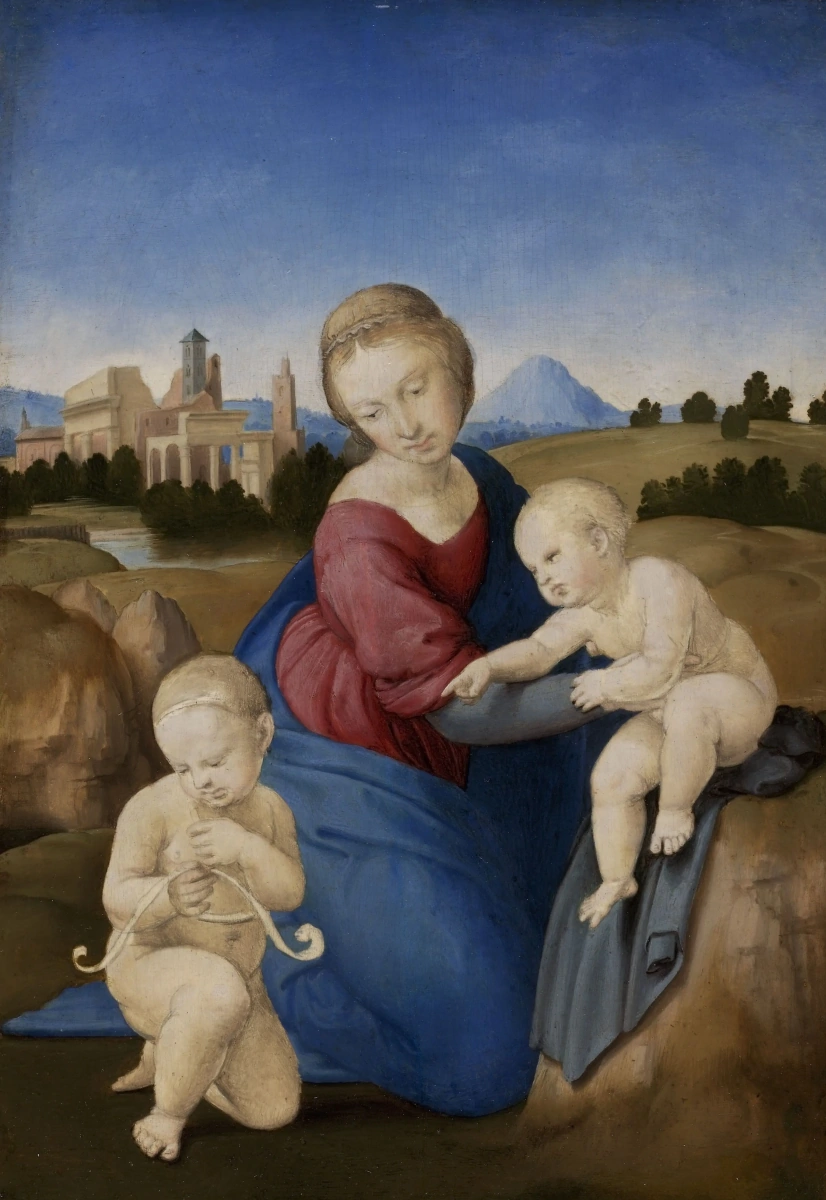
Egon Schiele retrospective
Where: the Albertina, ViennaWhen: 22 February — 18 June 2017
Raphael
Where: the Albertina, ViennaWhen: 29 September 2017 — 7 January 2018
The Albertina closes the following year with the first monographic exhibition of Raphael in Austria. Around 150 drawing and 20 paintings serve to represent all of the artist’s important projects and his creative life-periods: from his early Umbrian period (up to 1504) to his years in Florence (1504/1505−1508) and on to his Roman period (1508/1509−1520).
Raphael stands alongside Leonardo da Vinci and Michelangelo as one of the most important masters in art history. As a painter and architect he was a true universal genius of the High Renaissance who constantly sought to strike a balance between naturalist imitation and idealisation.
Numerous works from the museum’s own possessions as well as from renowned collections afford a detailed impression of Raphael’s oeuvre, his thought processes and modes of work, from design to final composition.
Left: Raphael, Self-Portrait, 1505−1506. Galleria degli Uffizi, Florence.
Visions of the Hispanic World. Treasures from the Hispanic Society museum and library
Where: Museo del Prado, MadridWhen: 4 April — 9 October, 2017
This exhibition presents around 200 works from the holdings of the Hispanic Society of America in New York. It was founded in 1904 by Archer Milton Huntington (1870−1955), a passionate collector of Hispanic art. The Fund has become a home for the most important collections of Spanish, Portuguese and Latin American art outside the Iberian Peninsula.
The exhibits that come to Madrid the following Spring include some of the most celebrated objects from the Hispanic Society’s collections. Among them are archaeological items, Islamic art and Spanish medieval art, works from the Spanish Golden Age, examples of Latin American colonial period and 19th-century art, and Spanish masterpieces from the 19th and 20th centuries.
Left: Francisco Goya, Portrait of the Duchess of Alba, 1797.
Renaissance Venice. The Triumph of Beauty and the Destruction of Painting
Where: Museo Thyssen-Bornemisza, MadridWhen: 20 June — 24 September, 2017
Themes such as the importance of color, the observation of real life through the image of power and beauty and the destruction of the brushstroke and color in late works of this period are illustrated through portraits, pastorals, mythological themes and religious compositions. Together they reveal the evolution of Venetian painting, created in one of the world’s most beautiful cities.
Sonia Delaunay-Terk. Art, design and fashion
Where: Museo Thyssen-Bornemisza, MadridWhen: 4 July — 15 October, 2017
Sonia Delaunay-Terk (1885−1979), an artist of Jewish origin from Odessa, was a key figure in the Parisian avant-garde. Jointly with her husband, the painter Robert Delaunay, she undertook a fascinating artistic journey from contrasts of color to dissolving of form through light that defined abstraction.
Sonia Delaunay-Terk. Art, design and fashion is the artist’s first monographic exhibition in Spain. Curators are willing to reveal the full extent of her multi-disciplinary artistic practice. The exhibition will show the paintings and designs for clothes and textiles alongside her innovative collaborations with poets and set designers. A special attention will be given to the period when Sonia Delaunay-Terk and her family lived in Madrid, arriving there exactly 100 years ago.
Left: Sonia Delaunay-Terk, Simultaneous Dresses (Three Women, Forms, Colours), 1925. Museo Thyssen-Bornemisza, Madrid
Paris, fin de siècle: Signac, Redon, Toulouse-Lautrec, and Their Contemporaries
Where: Guggenheim Museum BilbaoWhen: 12 May — 17 September, 2017
Mad About Surrealism
Where: Museum Boijmans van Beuningen in RotterdamWhen: 11 February — 28 May, 2017
This spring The Museum Boijmans van Beuningen will give its visitors the unprecedented opportunity to see the Surrealistic masterpieces from the four famous European collections. The majority of the works to be displayed at Mad About Surrealism — Dalí, Ernst, Magritte, Miró… have rarely or never been exhibited publicly and will disappear behind closed doors again as the exhibition ends.





























